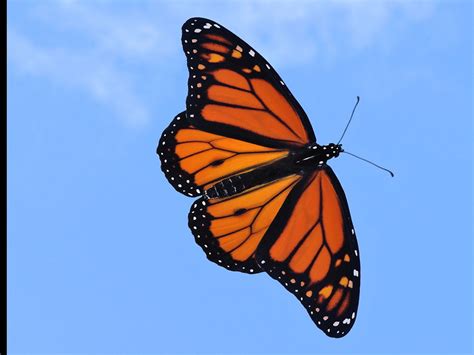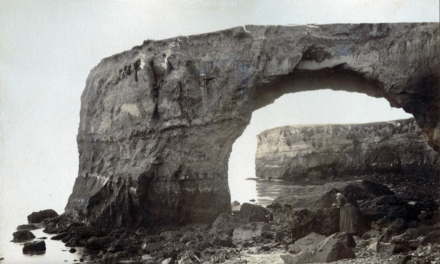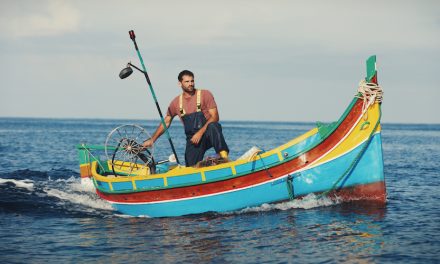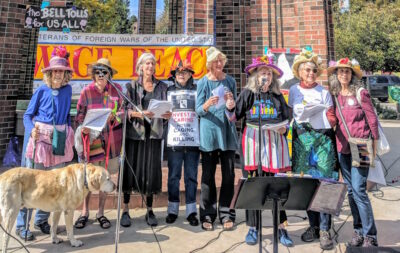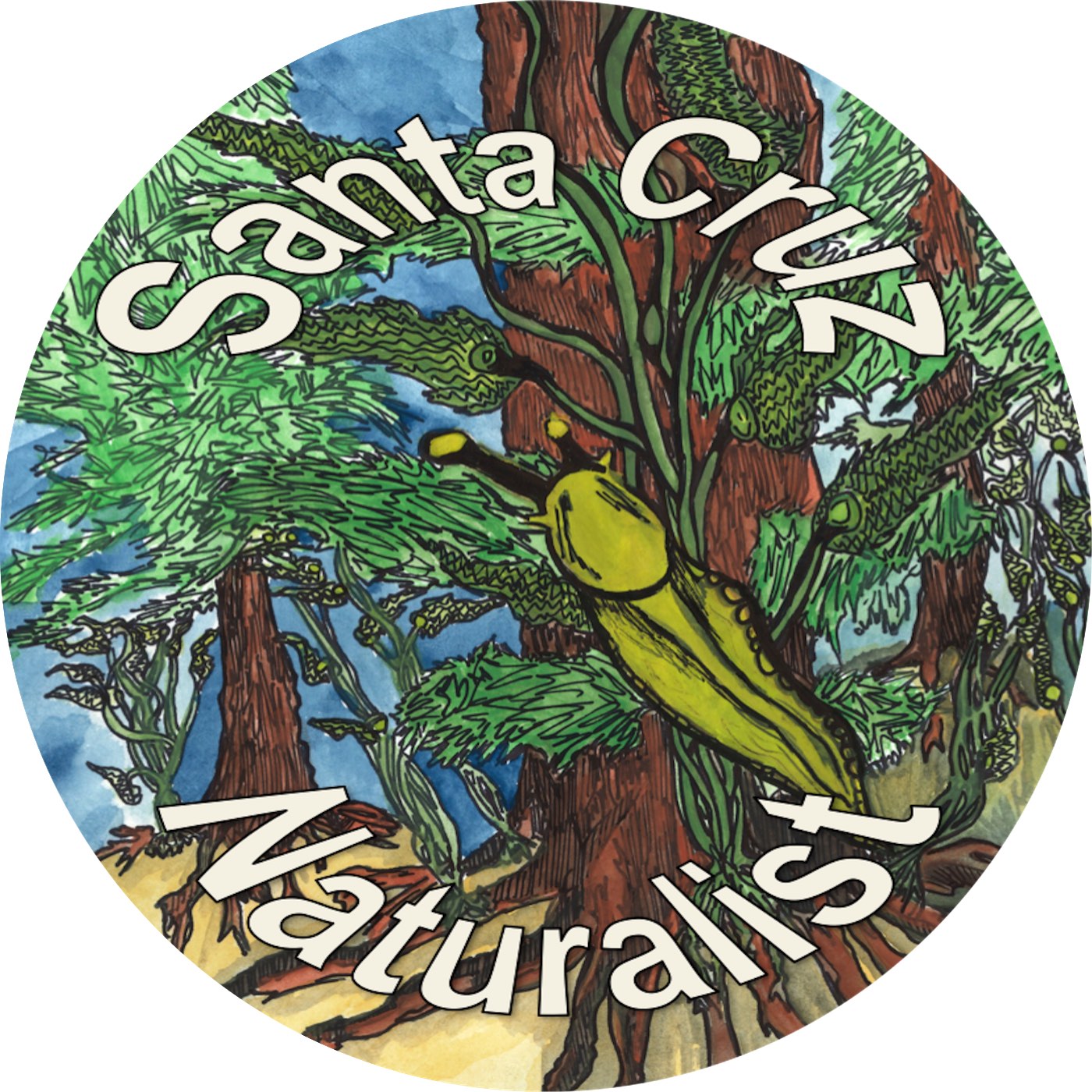
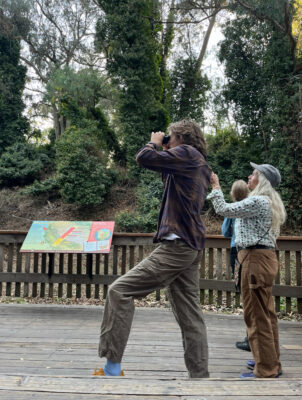
Western monarch butterflies are being added to the threatened species list
A science feature from Maury Burnett-Cavoto, our intern from UCSC Humanities.
NN1 [Tourists, nature noises, sounds of Natural Bridges]
M1 The Western monarch butterfly is an icon of California’s West Coast, with its vibrant orange and black wings and huge migratory clusters. Unfortunately, according to the U.S. Wildlife service, the western migratory population of monarchs has declined by more than 95% since the 1980’s – giving this species a greater than 99% chance of going extinct by 2080. All of these numbers tell a harrowing story about the monarch’s current population, so what is causing this steep decline?
M2 To get a clearer view on the role that Santa Cruz’s own monarch groves play in the preservation of this amazing species, I talked to California State Parks specialists about this situation, and how we – as California residents – can aid in the continuation of monarchs’ survival.
NN2 [Tourists, nature noises, sounds of Natural Bridges ~ 4 seconds]
M3 “I’m here at the Natural Bridges State Beach monarch reservation… it is a beautiful day in mid-January – low 60s – and a few people around but… not many monarchs.”
M4 It’s usually bustling with activity this time of year, but today it’s eerily empty. The monarchs are typically supposed to leave the grove around late February or March, but they’ve seemed to have flown off early this year.
Visitors seem a bit disappointed, though the peace of the grotto where the monarchs usually hang out is nevertheless a calming presence.
NN3 [Nature noises, sounds of Natural Bridges]
E1 “I’m Emily Doyle and I’m the Climate Resilience Program Manager at California State Parks foundation.”
M5 Dr. Doyle has her PhD in Earth Sciences, with expertise in climate science, adaptation, and mitigation. As a program manager, she runs major state park climate initiatives, including those that help restore monarch groves and put in place adaptive strategies as climate change progresses.
E2 “Western Monarchs return to the California coast every winter to these specific sites along the coast that provide a very specific microclimate. So, protection from the wind, protection from the cold, dappled sunlight, available water, available nectar sources. And that is the specific environment that allows them to survive the winter before they depart in February or following winter the next year.”
M6 This sounds ideal for monarchs survival – so what’s going wrong?
R1 “Changes in average temperature. Monarch butterflies are very specific…”
M7 This is where Rhiannon Sims comes in. She’s a California State Parks interpreter, meaning she does public education about the parks, explaining why they’re important, why to protect them, and how.
R2 “…if it is under 55 degrees, I want to say they can’t fly. So if we have these cold snaps, that can kill off a lot of them. And on the flip side, if it’s over – I want to say something like 65 or 70 degrees – if it’s warmer than you typically expect in the winter. It brings them out of their hibernation-like state, which is called diapause. And then they are burning their calories off, which makes it harder for them to survive through the whole time period they need to migrate back towards the Rocky Mountains.”
M8 What Rhiannon’s describing right now is the Western monarch’s uniquely arduous journey, spanning thousands of miles over several generations of butterflies. This journey – like most migrations – relies mostly on temperature. This means that our rapidly warming planet does some serious damage to their flight patterns and means to survive.
R3 “The other thing with the temperature changes is that it impacts the milkweed. Monarch butterflies are dependent on milkweed for their reproduction cycle… And milkweed plants may move further north in their range to get away from the increasing temperatures. And they also may have a shorter nectar producing season, which would impact the monarchs if they fly all the way up there to the milkweeds and then there’s not much nectar for them.”
M9 Earth’s consistently rising global temperature has marked 2024 for being the warmest year on record, with no evidence that we’re going to be cooling down any time soon – so what does that mean for the monarch numbers in recent years?
E3 “Unfortunately, it’s not a happy story. Monarchs used to number in millions before in the 90’s, we saw an absolute plummet in population due to primarily pesticides and habitat loss, as well as other causes. To the point that in 2020, there were fewer than 2,000 butterflies counted throughout the entire state… This year, the early count numbers are very, very low, and we’re expecting to see one of the lowest counts again that we, that we’ve ever seen.”
R4 “So this year we just had the Thanksgiving count and it is looking a little better than it was in previous years like 2020. The monarch count was 2,185… We have another grove locally called Lighthouse Field State Beach and there are probably about a thousand there right now.”
M10 The final count released by the Xerces Society was actually lower than the numbers that Rhiannon shared – just fourteen hundred monarchs in each Natural Bridges and Lighthouse Field State Beaches, respectively. In comparison to the numbers in 2020, that’s about a one hundred eighty percent increase in four years.
M11 Despite the numbers increasing, they’re still dangerously low – low enough for U.S. Wildlife officials to extend federal protections to monarch butterflies, announcing they will be adding them to the threatened species list by the end of 2025 – something that the Center for Biological Diversity and other conservation groups have been petitioning for since 2014. This would designate over four thousand acres of California coast to monarch use and put tight restrictions on any killing and/or transportation of monarchs. But, there is still more to be done, including the help of people like you.
E4 “At California State Parks foundation, we host a lot of volunteer days that people can participate in, and that includes, you know, planting native plants, so they have nectar sources. People can plant milkweed, which is one plant that monarchs lay their eggs on… Also just being sure, you know, don’t use pesticides, you know, eat organic, things like that.”
R5 “I would also say that there needs to be system-wide change. And for system-wide change to happen, that’s more government level. So you might consider who you vote for and what kind of policies you advocate for to support mitigating climate change.”
M12 The steps that are necessary for the survival of the Western monarch are being taken, but the fight isn’t over yet. The public comment period for the monarch press release ends on March 12, 2025 – The public can comment at regulations dot gov (that’s reg-u-la-tions dot G-O-V) and type “monarch butterfly” into the search bar. Federal protections could be a lifeline for our beloved monarch butterflies.
M13 This is Maury, reporting for KSQD. Many voices, one station.
13:37-14:02 “I think the lowest we had was actually just in 2020, when the count was 500 in Natural Bridges. So something like 80 to 90% decrease in numbers counted during our annual Thanksgiving and New Year’s Eve counts.
35:53-35:22 “So my name is Rhiannon Sims. I’m an interpreter, and so that means I do public education about our parks, explaining why they’re important, and why we protect them and how.”

